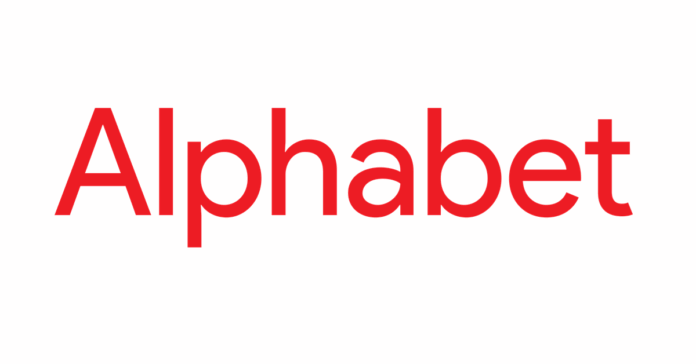MOUNTAIN VIEW, CA – July 26, 2025 – In the relentless current of technological evolution, where artificial intelligence and cloud computing command the tide, Alphabet Inc. (GOOG), the holding entity of the ubiquitous Google, continues to assert its formidable financial strength and strategic prowess. As of the close of markets on July 25, 2025, with its stock resting at $194.08, a comprehensive valuation employing the astute McGrew Framework Model presents a nuanced financial tableau: while conservative assessments suggest a degree of caution is warranted, more growth-centric projections reveal the stock to be currently fairly valued. This deep dive incorporates a harmonious blend of quantitative metrics and qualitative insights, underscoring Alphabet’s enduring competitive advantages even as it significantly ramps up investments in the foundational infrastructure of artificial intelligence.
Q2 2025 Earnings: AI Fuels Robust Performance
Alphabet’s most recent financial disclosure, the Q2 2025 earnings report, released earlier this week, served as a resounding affirmation of the company’s sustained momentum. The reported revenue soared to an impressive $96.43 billion, comfortably exceeding market expectations. This robust performance was primarily propelled by stellar contributions from its key segments: Google Cloud, Search, and YouTube.
Google Cloud, a burgeoning powerhouse, witnessed a remarkable 29% year-over-year revenue growth, reaching $10.35 billion. This acceleration in adoption is directly attributable to the increasing integration and utilization of advanced AI tools, notably its flagship AI model, Gemini. The company’s core engine, Search advertising, expanded by a healthy 14% to $48.51 billion, effectively assuaging earlier concerns regarding potential disruption from the rise of generative AI queries. Meanwhile, YouTube advertising revenue climbed 13% to $8.66 billion, benefiting significantly from the growing popularity of its short-form video content platform, Shorts, and the pervasive trend of connected TV consumption. Overall, operating income surged by an impressive 32% to $31.27 billion, with operating margins expanding notably to 32.4%, reflecting a disciplined approach to cost management and operational efficiency.
Leadership’s Vision: AI as a Multi-Year Growth Catalyst
Alphabet’s leadership remains steadfastly optimistic, consistently articulating a vision where artificial intelligence serves as a pivotal multi-year growth driver. During the recent earnings call, CEO Sundar Pichai articulated this strategic imperative, stating, “AI is transforming our products and creating new opportunities across our business.” This conviction is tangibly reflected in the company’s revised capital expenditure guidance for the full year 2025, which has been significantly increased to $85 billion from an initial $75 billion. This substantial increase is overwhelmingly earmarked for the expansion and enhancement of its critical AI and cloud infrastructure, signaling a profound commitment to leading the charge in the AI revolution.
CFO Ruth Porat underscored the company’s commitment to disciplined financial stewardship, noting a moderation in headcount growth as Alphabet sharpens its focus on operational efficiency. However, she also prudently acknowledged the potential for margin pressure stemming from the escalating depreciation costs and increased energy consumption intrinsically linked to the intensive demands of AI compute. Looking ahead, industry analysts are projecting a healthy 12-15% revenue growth for 2026, largely fueled by the deeper integration of AI capabilities across its flagship products such as Search and Workspace. Nevertheless, the specter of increased regulatory scrutiny in ongoing antitrust cases remains a tangible risk that could potentially temper this otherwise bullish outlook.
Unpacking Alphabet’s Robust Financial Foundation
Alphabet’s financial metrics paint a compelling portrait of remarkable efficiency and underlying strength. The company’s trailing twelve-month Return on Equity (ROE) stands at an impressive 34.3%, a clear testament to its superior capital allocation strategies. Complementing this, the Return on Total Assets (ROTA) registers at 24.6%, effectively highlighting its robust profitability even after accounting for intangible assets. These figures not only surpass industry averages but are also underpinned by a formidable 58.9% gross margin and a solid 32.7% operating margin.
Furthermore, Alphabet boasts a healthy free cash flow yield of 3.1%, indicating strong cash generation. Its balance sheet is remarkably robust, characterized by a strikingly low debt-to-equity ratio of 0.10. This provides the company with substantial “dry powder” for strategic initiatives, including a significant $60 billion authorized for share buybacks and the nascent stages of a dividend program, currently operating with a conservative payout ratio of 8.5%. The current ratio in the latest period stands at a healthy 1.90, further affirming its strong liquidity position. In terms of leverage, the debt-to-cash and equivalents ratio is a mere 0.37, and the ultra-conservative cash ratio is 0.24, showcasing an abundance of readily available liquidity. Its ability to service debt is exemplary, with an interest coverage ratio of 348 times over the trailing twelve months.
Valuation Models: A Tale of Two Perspectives
Despite Alphabet’s undeniable financial strength, valuation models offer a more nuanced and at times, divergent, set of perspectives. The Buffett-Inspired valuation method, which predicates its assessment on a conservative 3% Free Cash Flow (FCF) growth rate, yields an intrinsic value of $111.75 per share. This model suggests that at the current market price of $194.08, the stock appears to be significantly overvalued, potentially warranting consideration for selling or at least a cautious stance.
In stark contrast, the McGrew Growth method, which incorporates a more aggressive initial FCF growth rate of 14.1% tapering to 6% over time, estimates an intrinsic value of $194.42. This valuation aligns remarkably closely with the current market price, thereby suggesting a “Hold” recommendation as the stock appears to be fairly valued according to this growth-oriented framework. The McGrew MoS (Margin of Safety) threshold for entry, for those seeking a more conservative buying opportunity, is identified at $116.65, reinforcing the current premium.
Alphabet’s Enduring Moat and Market Position
Alphabet’s competitive moat remains exceptionally formidable, constructed upon several unassailable pillars. Foremost among these are powerful network effects, where an expanding user base continuously refines its algorithms, leading to a virtuous cycle of improved service and greater user engagement. Coupled with this are invaluable intangible assets, notably its proprietary AI models and an unparalleled trove of data, alongside a deep-seated brand loyalty that captivates billions of users daily. This robust barrier has effectively repelled potential rivals, allowing Google to maintain an astounding 90% dominance in the global search market.
However, this growth, particularly in the AI era, is not without its capital-intensive requirements. Capital expenditures (CapEx) consumed a substantial 100.4% of trailing twelve-month free cash flow, a clear reflection of the immense infrastructure demands necessitated by the development and deployment of advanced AI technologies. Nonetheless, the company’s high asset turnover ratio signifies its ability to support scalable expansion without necessitating disproportionate increases in spending, a testament to its operational efficiency.
The broader tech industry, especially the digital advertising sector, continues to demonstrate remarkable resilience, with demand remaining steady across various economic cycles. Alphabet’s strategic diversification into high-growth areas like cloud computing and artificial intelligence further fortifies its position, enabling it to adeptly navigate and even thrive amidst market disruptions, as evidenced by its consistent revenue growth even during previous economic downturns.
Competitively, Alphabet operates within an oligopolistic landscape, holding a commanding lead in search against contenders like Microsoft’s Bing, which commands less than a 10% market share. In the burgeoning cloud market, Google Cloud Platform (GCP) stands as a formidable third player, competing effectively against industry giants Amazon Web Services (AWS) and Microsoft Azure. While Microsoft’s aggressive integration of AI capabilities, such as Copilot, presents a direct challenge to Google Search, Alphabet’s sprawling Android ecosystem, which commands over 70% of the global mobile OS share, and the ubiquitous reach of YouTube provide powerful counterbalances. Furthermore, while Amazon leverages its e-commerce synergies in the cloud space, Google’s unparalleled data advantage in the realm of generative AI offers a distinct and powerful differentiator.
Risks and Future Outlook: Balancing Innovation with Scrutiny
Despite its impressive trajectory, Alphabet is not immune to potential headwinds. Antitrust probes, both in Europe and the United States, represent a looming risk that could potentially curb future acquisitions or even necessitate divestitures. Regulatory pressures, particularly concerning ad targeting practices, could also impact its core advertising business. However, management’s proactive approach to compliance and its strategic diversification efforts are likely to mitigate these risks. Over the past five years, aggressive share repurchases have reduced the outstanding share count by 11.5%, significantly enhancing per-share value amidst an impressive 25.6% earnings growth CAGR.
Looking ahead, Alphabet’s staggering $85 billion CapEx commitment unequivocally signals the company’s profound confidence in the transformative potential of artificial intelligence. CEO Sundar Pichai has consistently highlighted “multi-year opportunities” in generative AI, with early monetization strategies emerging through premium subscriptions and advanced enterprise tools. Analysts are forecasting a robust 15% revenue CAGR through 2027, a testament to the anticipated impact of AI integration. However, the successful execution of stringent cost controls will be paramount, particularly as depreciation expenses are projected to rise in tandem with increased AI infrastructure investments.
Investor Considerations: Growth Engine with Valuation Nuances
For investors, Alphabet presents a compelling proposition as a quintessential tech growth engine, epitomized by its impressive 17.7% five-year revenue CAGR and a solid 1.90 current ratio affirming its robust liquidity. Its five-year CAGR ROE stands at 14.6%, with a trailing twelve-month ROIC of 26.0%. The gross profit margin over the trailing twelve months is a healthy 58.9%, and the net profit margin stands at 31.1%. The five-year earnings growth rate is 25.6% CAGR, demonstrating consistent profitability. The per-share book value growth over five years is 14.6% CAGR, showcasing organic equity expansion. The capital structure predominantly consists of long-term debt, which is managed extremely well.
Yet, the inherent caution flagged by the more conservative valuation models suggests that patience might be a virtue for potential new entrants, with the aforementioned McGrew MoS threshold of $116.65 serving as a potential lower entry point.
Ultimately, Alphabet’s future trajectory hinges critically on its ability to effectively monetize its substantial AI investments while simultaneously navigating escalating operational costs and the intricate web of regulatory challenges. With its broad and defensible competitive moat and highly efficient operations, Alphabet solidifies its position as a core holding for long-term investors seeking exposure to the forefront of technological innovation, even as near-term volatility stemming from significant CapEx ramps warrants careful monitoring. Alphabet’s strategic blend of a robust defensive moat and an aggressive offensive AI strategy positions it unequivocally for sustained leadership in the ever-evolving digital landscape. As the global digital transformation accelerates its pace, Alphabet’s expansive ecosystem—encompassing the pervasive Search, the powerful Cloud, and the engaging YouTube—offers diversified exposure to a wealth of high-margin opportunities.

